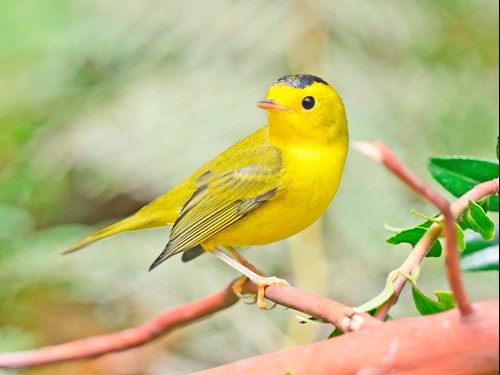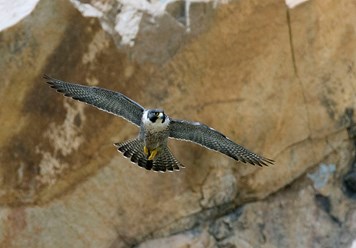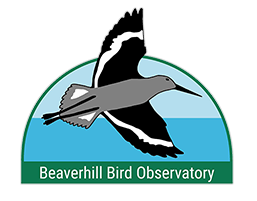Migration and Climate Change; a Complicated Relationship (Part 2)
Friday, February 16, 2018Climate warming is complicated because warming does not happen evenly across the planet. The rate of warming is greater at the poles than at the equator, and as we discussed in a previous report, this can cause birds to migrate at the wrong time, often with negative impacts on their survival or reproduction. However, there are other effects that climate change has on migration besides the direct impact of temperatures on birds. One issue of concern is that the uneven warming of the planet will cause changing wind patterns and an increased number of tropical storms.
Birds face a lot of stressors during migration. They must build up huge fat reserves before leaving, and sometimes they fly nonstop to their destination. Other times they must land at stopover sites to refuel. They will often take advantage of calm days or favourable winds to help them migrate long distances, and will avoid flying on days when the wind is against them.
This is particularly apparent when looking at how birds decide to cross open water. Many warbler species, small insect eating songbirds, will avoid crossing open water whenever possible. Unfortunately, there are times when they have no choice. 
These warblers may wait days until the winds are just right to push them across safely. If they choose poorly, or the weather changes, they may run out of energy before reaching the other side.
This produces a birding phenomenon known as “fallout”. Not nuclear fallout; bird fallout. After crossing large bodies of water such as the Gulf of Mexico, particularly if there has been a big storm, warblers and other songbirds will be exhausted. They will hunt for food or simply sit in plain view, without hiding, because they are too tired to do anything else. Bird watchers will travel to the southern states on masse to see rare birds that are too busy eating or resting to conceal themselves. People even occasionally find themselves with interesting and exhausted visitors on their boats, oil rigs, and on lighthouses during these incredible migratory events.
What’s the problem then?
The problem is, the worse the storms or the more frequent they are, the more birds will die from these storms. It is more difficult to fly in rain and wind, and if birds are hit by a storm while crossing open water, they may not have enough energy to reach the other side. Not only that, but if climate change impacts wind patterns, birds may no longer have favourable winds to rely on to help them cross stretches of water and reach their destinations. At first bird fallout is very exciting and gives people the chance to see many rare birds easily, but it is actually bad for the survival of these beautiful creatures.
One dramatic example was the death of an Alberta Peregrine Falcon in October 1998. After successfully breeding in Wood Buffalo National Park in northern Alberta, the female falcon flew south-east diagonally across the continent to Florida and Cuba. While trying to cross the Caribbean Sea, she flew into Hurricane Mitch and had to return to firm land. A couple of days later she again tried to cross the Caribbean further west but flew into Hurricane Mitch again, this time her satellite transmitter went silent as she fell exhausted into the ocean, a victim of severe weather.
Not only do birds see direct impacts from changing winds and increased tropical storms, but unfortunately, we are now seeing the results of cumulative impacts. On top of the impacts of changing climate that we have discussed, birds are also experiencing pollution, cat predation, and habitat destruction, fragmentation, and degradation. When a rare warbler must migrate from North to Central America (and back) every year, it is more difficult than ever to survive. Challenges this warblers must face includes winds blowing against it, storms knocking it out of the sky, its breeding, wintering, and stopover habitats disappearing from the landscape, and the high risk of predation by pet or feral cats at stopover sites.
What can I do?
You can help protect wild spaces. In order to protect birds from the changes that are happening, we need to provide a buffer zone. No species can exist when they do not have a place to exist. If we protect areas of habitat with little to no disturbance, species will be more likely to resist other impacts to their environment. This could include lobbying, voting, talking to your representative, volunteering with organisations in your local protected areas, or participating in tree planting volunteer activities. You could even buy native plant seeds and cultivate native plants in your garden! Many resources exist to help you, including https://www.audubon.org/native-plants.
Photo Credit:
Wilson's Warbler in Western Washington State by VJAnderson. 7 April 2019. https://commons.wikimedia.org/wiki/File:Wilson%27s_Warbler_6839avv.jpg
Migration photo by David King from Haifa, Israel. 23 March 2008. https://commons.wikimedia.org/wiki/File:Seasonal_Bird_Migration_(2356814851).jpg
Peregrine Falcon in flight across Morro Rock in Morro Bay, California. By Kevin Cole, Pacific Coast USA. 29 June 2012. https://commons.wikimedia.org/wiki/File:Falco_peregrinus_Morro_Rock.jpg
Additional Reading:
IPCC, 2014: Climate Change 2014: Synthesis Report. Contribution of Working Groups I, II and III to the Fifth Assessment Report of the Intergovernmental Panel on Climate Change [Core Writing Team, R.K. Pachauri and L.A. Meyer (eds.)]. IPCC, Geneva, Switzerland, 151 pp.
NASA, Earth Observatory. The Impact of Climate Change on Natural Disasters. https://earthobservatory.nasa.gov/Features/RisingCost/rising_cost5.php
NASA. The consequences of climate change. https://climate.nasa.gov/effects/
Audubon. Plants for Birds. http://www.audubon.org/plantsforbirds
Blog Posts
- What is Climate Change
- Drought: What Can We Do?
- Migration and Climate Change; a Complicated Relationship (Part 1)
- Migration and Climate Change; a Complicated Relationship (Part 2)
- Climate Change and Birds’ Resources
- Ladder to Extinction
- Arctic Warming and Ecosystem Impacts
- Climate Change Connection to Mountain Pine Beetle
- Tackling Climate Change Denialism
- Impact of Climate Change on Bluebirds
- An Introduction to Climate Change
- Great Decline of Aerial Insectivores
- Role of Oceans in Fighting Climate Change
- Role Of Forests In Fighting Climate Change
- Impact of Climate Change on Shorebirds
- Impact of Hurricanes and Climate Change on Birds
- An Introduction to Climate Change.
- Impact of Forest Fires, and Climate Change on the Nature
- Impacts of Climate Change on Owls
- Impacts of Climate Change on Birds of Prey
- Whitebark Pine and Clark's Nutcracker
- COVID 19 & The Environment
- Impact of Global Warming on Bird Anatomy and Colour Polymorphism
- Climate Change & West Nile Virus
- All Posts

